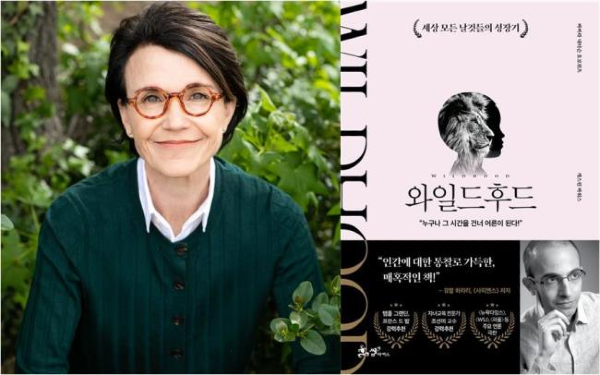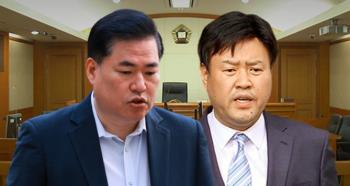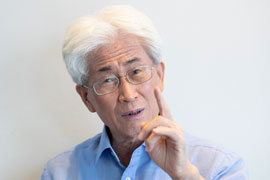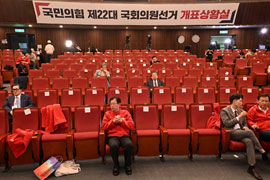
- 인간 청소년과 같이 청소년기 동물도 질풍노도기를 겪는다. 사진은 탄자니아의 수컷 점박이 하이에나. 사진=와일드후드닷컴
국내 번역된 《와일드후드》(김은지 옮김, 쌤앤 파커스 간)의 공동 저자 중 한 사람인 바버라 내터슨 호로위츠 교수(UCLA 의대 교수, 하버드대 인간진화생물학부 객원교수)는 “인간을 포함해 지구상 모든 동물이 번듯한 어른으로 성장하기 위해선 4가지 핵심기술이 필요하다”며 △포식자의 턱에서 벗어나 안전하게 지내는 법, △사회적 관계를 탐색하는 법, △구애의 언어를 배우는 법, △음식과 살 곳을 찾는 법을 배우는 법을 강조했다.
호로위츠 교수는 “이 4가지 핵심기술을 배우지 못한 청소년기 동물은 잔인한 야생의 세계에서 살아남지 못한다”며 “인간 역시 청소년기 동물들에 대해 배워야 한다”고 했다.
촉법소년 연령 인하 논란과 관련해 “정확한 연령을 말할 수는 없지만, 야생의 많은 종의 삶을 고려할 때 책임감 있는 성인이 되는 데는 과거에 우리가 믿었던 것보다 훨씬 더 오랜 시간이 걸리는 것 같다”고 말했다. 다음은 계속된 문답이다.
- 책을 읽으면서 청소년들이 성장하면서 독립적이면서도 낙관적이고 용기를 갖는 것이 중요하다는 것을 깨닫게 되어 매우 신선했습니다. 인생의 위험에 직면하는 오늘날의 젊은이들에게 다양한 어려움을 극복할 수 있는 방법에 대해 조언해 주시겠습니까?
“인간과 동물을 포함해 어느 종(種)을 막론하고 청소년이 성공적이고 독립적인 성인이 되기 위해 반드시 습득해야 할 네 가지 기술이 있습니다. 1) 포식자의 턱에서 벗어나 안전하게 지내는 법, 2) 사회적 관계를 탐색하는 법, 3) 구애의 언어를 배우는 법, 4) 음식과 살 곳을 찾는 법을 배우는 법입니다.
야생에서 이 네 가지 핵심 기술을 습득하지 못한 사춘기 동물은 성체가 되어서도 살아남지 못합니다. 야생의 세계는 잔인합니다. 그러나 인간 세계에서는 많은 사람들이 연대기적으로 나이가 들지만(수치상으로는 성인이지만), 사회적 기술이 부족하거나 연애 파트너를 찾는데 어려움을 겪거나 독립적이지 않을 수 있습니다.
성장에 대한 도움을 자연에 의지하는 것이 흥미로운 이유는 이 네 가지 핵심 기술을 연습함으로써 성숙하고 행복한 성인이 되는 것이 훨씬 더 쉽다는 것을 알 수 있기 때문입니다. 무엇이 필요한지 아는 것이 첫 번째 단계이며, 자연에서는 무엇이 필요한지 정확히 알 수 있습니다.
젊은이들을 위한 또 다른 통찰은 종을 막론하고 청소년기가 힘들다는 것입니다(Another insight for young people is that across species adolescence is HARD). 다른 사람보다 경험이 적거나 자원이 적으면 매우 어려울 수 있습니다. 그러나 청소년기의 스트레스는 극단적이지 않은 한 특정 종류의 성장을 촉진하기 위해 오히려 필요한 것으로 보입니다. 이 책 《와일드후드》에서는 어린 동물이 안전하고 튼튼한 성체로 성장하는 데 도움이 되는 청소년기 동물의 전략과 행동에 대해 설명합니다. 이러한 행동에는 포식자 검사, 퍼피 라이선스(어린 강아지를 서열에서 일시적으로 제외하는 현상), 승자 효과, 연습 분산 등이 포함됩니다.
결론부터 말하자면, 청소년기는 어려울 수 있다는 것입니다.
인간 청소년은 해를 끼칠 수 있는 위험한 위협들을 감수해야 하고, 정신적 스트레스에 취약할 수 있으며, 독립하는 데 어려움을 겪을 수 있습니다.
하지만 지구상에서 매일같이 일어나는 청소년기 동물들은 통찰력, 영감, 기쁨의 원천으로 하루를 성공적으로 시작합니다.”
- 어린 시절이 어땠는지 공유해 주시겠어요? 또한 그 당시 호로위츠 교수의 꿈은 무엇이었나요?
“저는 특별히 위험을 감수하는 청소년기를 보내지 않았지만(저보다 동생들이 더 그랬죠), 13살 무렵 갑자기 부모님의 생각보다 또래 친구들의 생각에 훨씬 더 관심을 갖게 된 뚜렷한 순간이 기억납니다.
제가 신뢰하고 존경하는 훌륭한 부모님이 계셨기 때문에 제게는 이상한 일이었습니다. 하지만 동물의 사춘기에 대해 많은 것을 배웠기 때문에 이것이 정상적인 변화라는 것을 알고 있습니다. 독자 여러분은 사춘기 생쥐가 또래가 먹는 음식이 무엇이든, 심지어 이전에 병을 일으켰던 음식일지라도 어떻게 먹게 되는지 궁금할 것입니다!”

바버라 내터슨 호로위츠 교수와 국내 번역서 《와일드후드》
- 인간은 위험에 직면했을 때 자신을 방어하려는 본능이 있다고 생각하세요?
또한, 청소년들이 삶에서 위험을 접할 기회가 없다면 균형 잡힌 성인으로 성장할 수 있을까요?
“야생의 청소년기 동물들이 독립적이고 안전한 성인으로 성장하기 위해서는 반드시 위험에 직면해야 합니다. 포식자의 생김새와 냄새를 익히고, 포식자의 사냥 패턴을 익히며, 포식자를 피하는 방법을 배워야 합니다.
이러한 학습을 돕기 위해 진화한 전략이 있습니다. 하지만 안타깝게도 야생에서는 많은 청소년기 동물들이 성인이 될 때까지 살아남지 못합니다. 이것은 우리 종에서 용납할 수 없는 일입니다. 따라서 우리가 야생에서 자라는 것에 대해 알고 있는 바에 따르면, 안전하게 성인이 되기 위해선 청소년기 위험을 경험하는 것이 필수적입니다. 그러나 우리는 인간 청소년들이 위험을 배우는 동안 해를 입지 않도록 해야 합니다.
이 책에서는 야생동물에서 영감을 얻었지만 인간에게 적응한 여러 가지 방법을 통해 청소년이 위험을 배우고, 따라서 더 안전해질 수 있도록 도와주면서도 최소한의 위험을 감수할 수 있는 방법을 소개합니다.”
- 한국에서는 만 10세 이상 14세 미만의 청소년인 경우 범죄를 저질러도 처벌받지 않습니다. 일본과 영국은 범죄를 저지를 수 있는 최소 연령을 낮췄지만 범죄가 줄지는 않았습니다. 한국은 최저 연령을 낮출지 여부에 대해 의견이 엇갈려 난항을 겪고 있습니다. 기회가 된다면 이 문제를 담당하고 있는 한국 정부 관계자들에게 이 복잡한 문제를 극복하고 해결하기 위해 어떤 조언을 해주고 싶으신가요?
“이 문제는 인간이 실제로 언제 "성인"이 되는지 이해하는 것이 얼마나 어려운지를 잘 보여줍니다. 사실 야생동물이 어떻게 성인이 되는지는 이 문제에 도움이 될 수 있습니다. 종에 관계없이 사춘기는 사춘기의 시작을 의미합니다. 하지만 사춘기에 접어드는 것은 생물학적 사건입니다. 사춘기는 성인이 되는 것과는 분명히 다릅니다. 성인이 되기 위한 네 가지 핵심 기술을 습득하는 데 걸리는 시간이 여러 종에 걸쳐 다르다는 점을 고려하면, 인간 청소년이 자신의 행동에 책임을 져야 하는 시기가 언제인지에 대한 문제가 밝혀집니다.
정확한 연령을 말할 수는 없지만, 야생의 많은 종의 삶을 고려할 때 책임감 있는 성인이 되는 데는 과거에 우리가 믿었던 것보다 훨씬 더 오랜 시간이 걸리는 것 같습니다.”
- 한국 독자들에게 짧은 인사 부탁드립니다.
“《와일드후드》가 한국에서 출간되어 매우 기쁩니다! 야생동물의 사춘기에는 인간으로 성장하는 과정에 대한 보편적인 교훈이 많이 담겨 있습니다. 한국 청소년의 일부 측면은 독특할 수 있지만, 야생동물 청소년기가 제공하는 통찰력은 보편적이며 전 세계 청소년, 부모, 교사, 사회에 도움이 될 수 있다고 믿습니다. 이러한 통찰을 한국 독자 여러분과 공유하게 되어 매우 기쁩니다!” (끝)
- Reading your book, it was immensely refreshing to realized the importance of youths being independent yet optimistic and encouraging as they grow-up. Would you advise the young people of today, how they can overcome diverse difficulties as various individuals confront dangers in life?
Across species there are four skills adolescents must master to become successful and independent adults. They are 1) Learning to stay safe (out of the jaws of predators), 2) learning to navigate social relationships, 3) learning the language of courtship, and 4) learning to find food and a place to live.
In the wild, an adolescent animal who doesn’t master these four core skills will not survive into adulthood. It is brutal in the wild. But in the human world, many people grow older chronologically (they have numerically adult ages) but they may lack social skills, or they may have difficulties finding romantic partners, or they may not be independent.
What is exciting about turning to nature for help with growing up is that we see that, by practicing these four core skills, it is much easier to become a mature and happy adult. Knowing what is required is the first step… and in nature it is clear exactly what is required.
Another insight for young people is that across species adolescence is HARD. It can be very difficult to be less experienced or have fewer resources than other individuals. But, the stresses of adolescence appear to be rather necessary (as long as they are not extreme) to promote a certain kind of growth. In the book we describe adolescent animal strategies and behaviors that help strengthen young animals, propelling them into safe and strong adulthoods. These behaviors include: predator inspection, puppy license, the winner effect, practice dispersals, and more (see our glossary of terms).
The bottomline is that adolescence can be difficult—human adolescents may take dangerous risks that can harm them, they may be vulnerable to mental stress, and they may find it challenging to become independent. However, the successful launch of animal adolescents every day on planet Earth is a source of insight, inspiration, and joy.
- Would you mind sharing how your youth period? Also, what was your dream to be at that time?
I was not a particularly risk-taking adolescent (my siblings were more than I), but I recall a distinct moment when I was about 13 when I suddenly became much more interested in what my peers thought than what my parents thought. It was odd for me because I had wonderful parents whom I trusted and respected a lot. Still, having learned so much about animal adolescence, I know that this is a normal shift. Readers may be interested in how adolescent mice will eat whatever their peers are eating–even if it is food that had previously made them sick!
- Do you think humans have natural instinct to defend themselves when in danger?
Also, do you think if youths don't have a chance to encounter dangers in life, would they be able to grow up as well-rounded adults?
For a wild animal adolescent to grow into an independent and safe adult, they must encounter danger. They need to learn what their predators look and smell like, they must learn their patterns of hunting, they must learn how to avoid them. There are strategies that have evolved to aid with this learning (see predator inspection). However, in the wild, sadly, many adolescents do not survive until adulthood. This is unacceptable in our species. So there is a challenge—based on what we know about growing up in the wild, it is imperative to experience danger as an adolescent in order to be safe as an adult. However, we must be sure that our human adolescents don’t get harmed while learning about danger. In our book, we consider the number of wild animal-inspired but human-adapted practices that help adolescents learn about danger and, therefore, become safer—with a minimum amount of risk to them.
- In South Korea, if you are a youth within ten to fourteen years old range, you will not be punished for committing a crime. Japan and the United Kingdom lowered the minimum age to be committed, however that did not reduce the crime. South Korea is having a difficult time with different opinions whether to lower the minimum age or not. If you had the opportunity to do so, what you would you advise the Korean government officials who are in charge of this matter to overcome and resolve this complex issue?
This challenge underscores how difficult it can be to understand when a human is actually “adult.” In fact, how wild animals become adults can help with this issue. Across species, puberty marks the onset of adolescence. But entering puberty is a biological event. It most definitely is NOT the same as becoming an adult. Recognizing how long it takes in so many species to master the four core skills of becoming an adult sheds light on the issue of when a human adolescent should be responsible for their actions.
While I cannot say what exact age that might be, I might offer that based on the lives of many species in the wild, becoming a responsible adult seems to take much longer than we believed in the past.
- Can you include a short greeting to Korean readers?
We are thrilled to see that Wildhood is being published in Korea! Wild animal adolescence contains many universal lessons for the process of growing up as a human. While some aspects of Korean adolescents may be unique, we believe the insights that wild animal adolescents provide are universal and can help adolescents, their parents, teachers and societies around the world. We are thrilled to share these insights with Korean readers! (끝)

















































